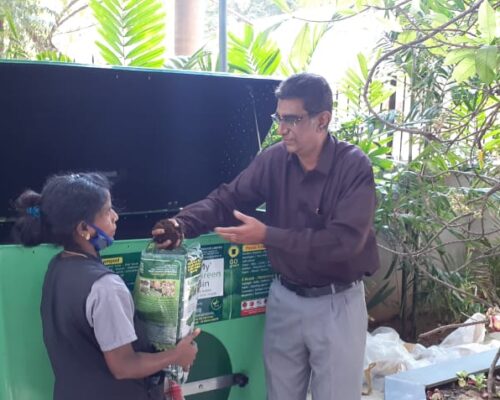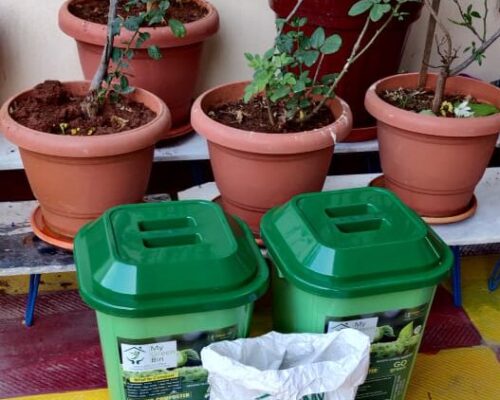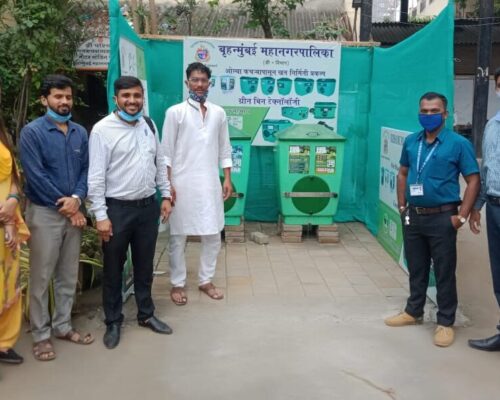The compost bin is used to convert the solid food waste into useful organic compost.
Overview
Briquetting technology is one of the simple technologies practiced for making biomass-based fuels including wastes like milled paper, plastic and other combustible wastes. Combustible matters present in municipal solid wastes like paper, plastic and biomass were processed using grinders and shredders and then densified by briquetting machine.
How It Works?!
Biomass briquettes, mostly made of green waste and other organic materials, are commonly used for electricity generation, heat, and cooking fuel. These compressed compounds contain various organic materials, including rice husk, bagasse, ground nut shells, municipal solid waste, agricultural waste. The composition of the briquettes varies by area due to the availability of raw materials. The raw materials are gathered and compressed into briquette in order to burn longer and make transportation of the goods easier. These briquettes are very different from charcoal because they do not have large concentrations of carbonaceous substances and added materials. Compared to fossil fuels, the briquettes produce low net total greenhouse gas emissions because the materials used are already a part of the carbon cycle.
Combustible Mixed Waste ➜ Shredding ➜ Drying ➜ Densification by Briquette Machine à Cylindrical Briquettes
Generally, the briquettes are made through the following procedures:
- Raw materials preparation: mechanical fragmentation of raw materials by a crushing machine (which is up to the quality and size of the materials and the technology applied, and the procedure can be staged).
- Drying of the crushed materials when the moisture content is too high for briquettes production.
- Briquette the processed materials by using various types of briquetting machines such as the screw pressing machines, stamping pressing machines and hydraulic briquetting machines). The briquettes are made in the process of pressure agglomeration, in which the loose materials is molded into a permanent, geometrical and defined dimensions by the compaction pressure and intermolecular forces and bonds when necessary.
Why Us!
Greenrich Group is committed to helping its clients reach their goals, to personalizing their experiences, to providing a sustainable environment, and to making a difference
Our strong sense of identification with client projects means that we are constantly striving to provide solutions, even for issues they aren’t yet aware of. To this end, we adopt a progressive approach to right technology and marketing techniques.
Product Ranges
Compaction is another factor affecting production. Some materials burn more efficiently if compacted at low pressures, such as corn stover grind. Other materials such as wheat and barley-straw require high amounts of pressure to produce heat. There are also different press technologies that can be used. A piston press is used to create solid briquettes for a wide array of purposes. Screw extrusion is used to compact biomass into loose, homogeneous briquettes that are substituted for coal in cofiring. This technology creates a toroidal, or doughnut-like, briquette. The hole in the centre of the briquette allows for a larger surface area, creating a higher combustion rate.
Key Benefits
- Biomass briquettes are a biofuel substitute to coal and charcoal.
- Waste is recycled to solve environmental and renewal energy problems.
- Compared to other options, this technology offers higher economic feasibility and more efficiency in conversion of waste into renewable energy.
- Comprehensive method and system to convert all waste to energy, compost, fertilizer or additive.






